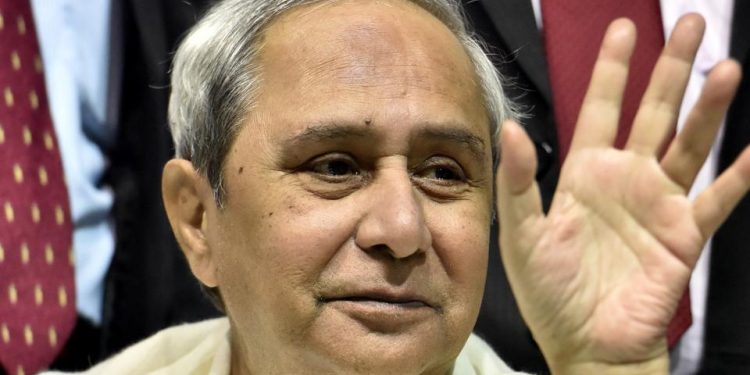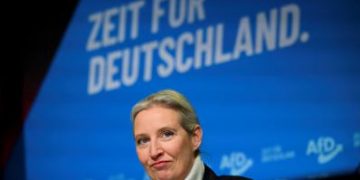Bhubaneswar: The electoral fortune of Chief Minister Naveen Patnaik and four of his council of ministers besides Opposition leader Narashingha Mishra will be put to test as Odisha goes for second phase elections in five Lok Sabha and 35 Assembly seats Thursday.
Altogether 279 candidates are in fray for five Lok Sabha and 35 Assembly seats. Although all the seats will witness multi-cornered contests, the real battle for ballots would be mostly confined to the ruling BJD, the BJP and the Congress.
All eyes are on Bijepur Assembly seat in Western Odisha where BJD supremo and Chief Minister Naveen Patnaik is seeking election besides his home constituency Hinjili seat in South Odisha.
For the first time in the electoral history, the Chief Minister is seeking election from two Assembly seats. Patnaik, who has been winning Hinjili Assembly seat since 2000 Assembly elections, this time decided to test his credibility and popularity in Western Odisha by contesting the Bijepur Assembly seat, a Congress bastion till 2014.
In the 2014 elections, the ruling BJD had captured four of the five Lok Sabha seats and almost swept the Assembly elections by winning 24 of the 35 Assembly seats.
The BJP had won one Lok Sabha seat (Sundargarh-ST) and four Assembly seats while the Congress bagged five seats and the CPI and Samata Kranti Dal one seat each.
The five Lok Sabha seats going to polls in the second phase are Bargarh, Sundargarh (ST), Bolangir, Kandhamal and Aska. Polling will be held simultaneously in 35 Assembly seats falling under these five parliamentary constituencies.
Campaigning for the second phase saw a bloody violence when two unidentified assailants shot dead BJP leader from Khurda Manguli Jena April 14 night. The state government had ordered a CB probe into the murder while the BJP observed Khurda bandh April 15 in protest against the gruesome murder and stringent action against the culprits.
The second phase Assembly elections will see veteran leaders Chief Minister Naveen Patnaik, four of his council of ministers Niranjan Pujari (Sonepur), Snehangini Chhuria (Attabira), Sushant Singh (Bhatli) and Bikram Keshari Aarukh (Bhanjanagar) seeking re-election.
Assembly Speaker P K Amat (Boudh), Leader of Opposition Narasingha Mishra (Bolangir), BJP Legislature party leader K V Singh Deo (Patnagarh), former minister Sharada Nayak (Rourkela) would also try their luck in the elections.
The five Lok Sabha seats will also witness Union Tribal Welfare Minister Jual Oram (Sundargarh-ST), BJD Rajya Sabha members Prasanna Acharya (Bargarh) and Achyuta Samanta (Kandhamal), BJP National Secretary Suresh Pujari (Bargarh), former BJP MP Kharavela Swain (Kandhamal) trying their electoral fortune.
The second phase saw a high voltage campaign by the ruling BJD and the BJP while the Congress campaigning was lacklustre as neither party President Rahul Gandhi nor any senior central leader visited the state for electioneering.
On the other hand, the BJP campaign was spearheaded by Prime Minister Narendra Modi, party national president Amit Shah, UP Chief Minister Yogi Adityanath, Jharkhand Chief Minister Raghubar Das, former Madhya Pradesh Chief Minister Shivraj Singh Chouhan and Union Petroleum and Natural Gas Minister Dharmendra Pradhan besides some other central ministers.
Both the Prime Minister and BJP President conducted roadshows in the second phase and addressed a series of election meetings christened as Vijaya Sanklap Samavesh appealing to the people to vote BJP to power for all-round development of the state.
The BJP leaders had attacked the Chief Minister encouraging the mining mafia and protecting the accused in the Chit fund scam and not implementing the Ayushman Bharat and PM Kissan Yojana in the state depriving lakhs of farmers and poor people in the state the benefit under these schemes.
In a bid to counter all the welfare schemes launched by the BJD keeping the elections in view, the BJP played a master stroke when Union Petroleum and Natural Gas minister Dharmendra Pradhan announced that if voted to power in the state, the BJP will provide half kg dal, half kg salt and five kg rice at Re 1 to nearly 3.26 crore people in the state.
For the ruling BJD, party supremo and Chief Minister Naveen Patnaik was the sole campaigner of the party who toured extensively the western and southern Odisha, conducted roadshows and addressed series of election meetings attacking the Centre for showing apathetic attitude towards the development of the state.
Patnaik even targeted the Prime Minister for not fulfilling all his promises made during the 2014 elections and said he (Modi) does not deserved to be the Prime Minister for the second time.
The BJD supremo had also accused the BJP of blocking the release of funds under the state government sponsored Kalia scheme meant for the welfare of the farmers and questioned as to who is BJP’s chief ministerial candidate for Odisha.
The BJD’s main poll plank was Rs 5,000 crore government grant to SHGs, zero per cent interest to SHGs with the limit of Rs 5 lakh, free education to the girls, Rs 25,000 marriage assistance to daughters of poor families and release of two instalments of Kalia fund amounting to Rs 10,000 on the day the BJD assumes power.
The Congress in its manifesto had promised to provide crop loan at zero interest, minimum guarantee income and an assistance of Rs 6,000 and free solar pumps to the farmers besides free education to girls.
The Congress campaign also centered on the non-performance and anti-people and anti-farmer policy of the BJP government at the Centre and the BJD government in the state and promised to raise the MSP for paddy per quintal at Rs 2,500.






































